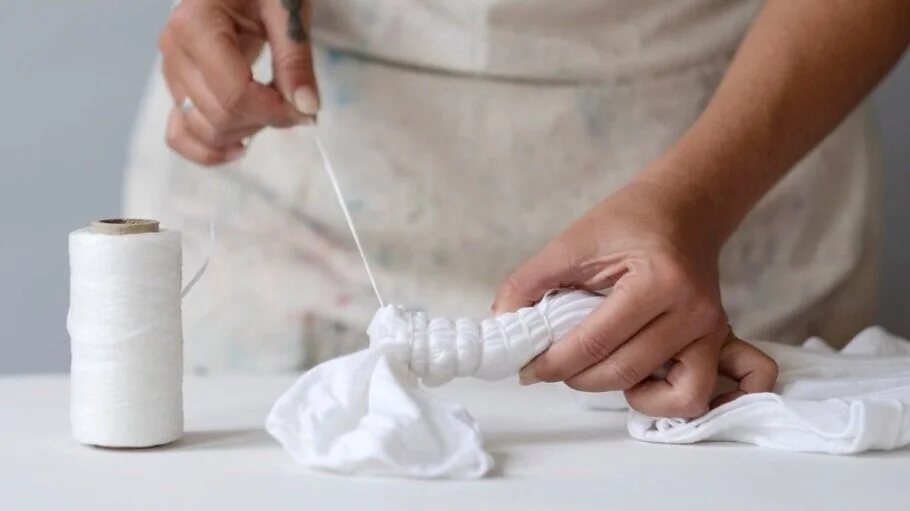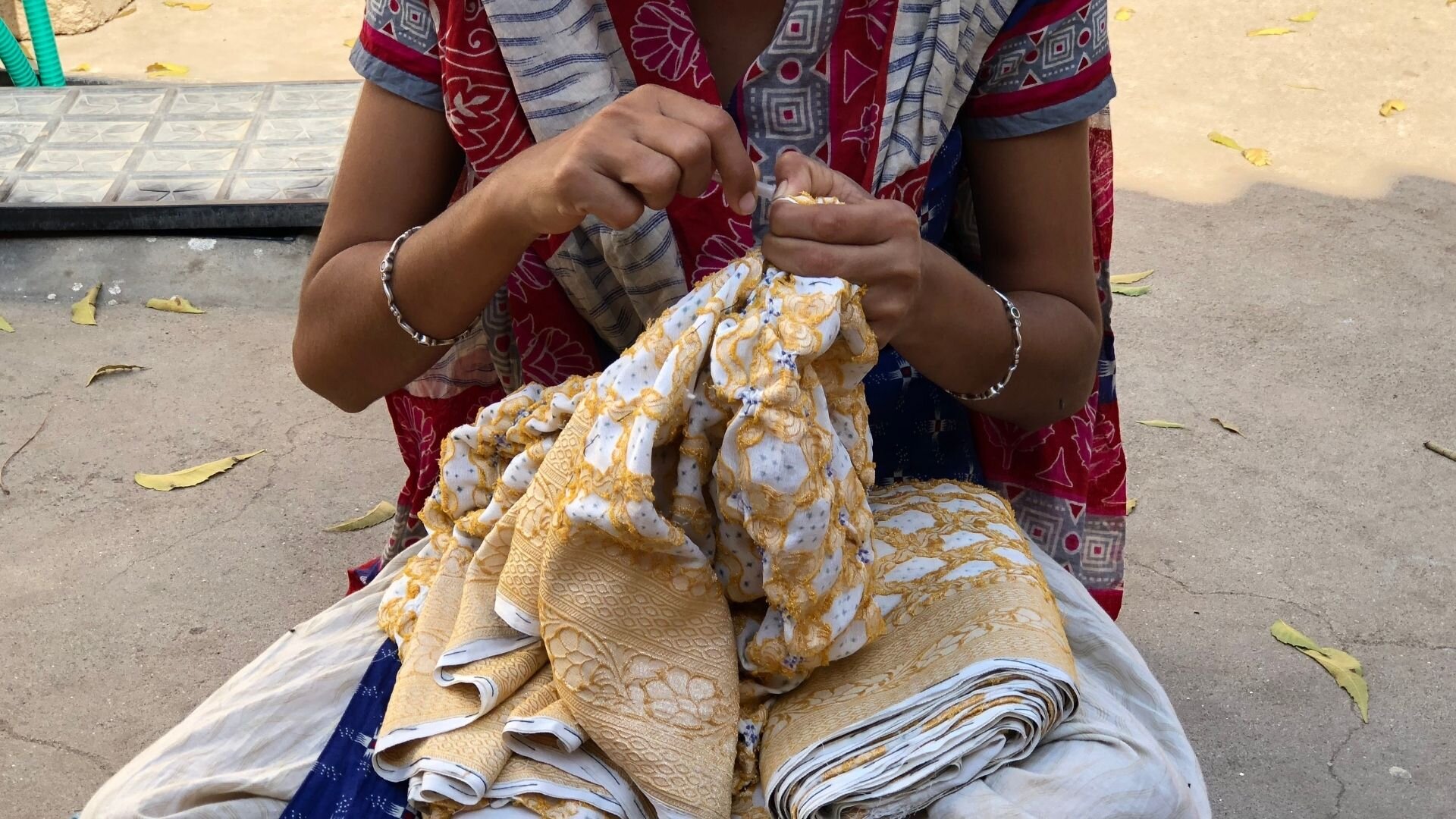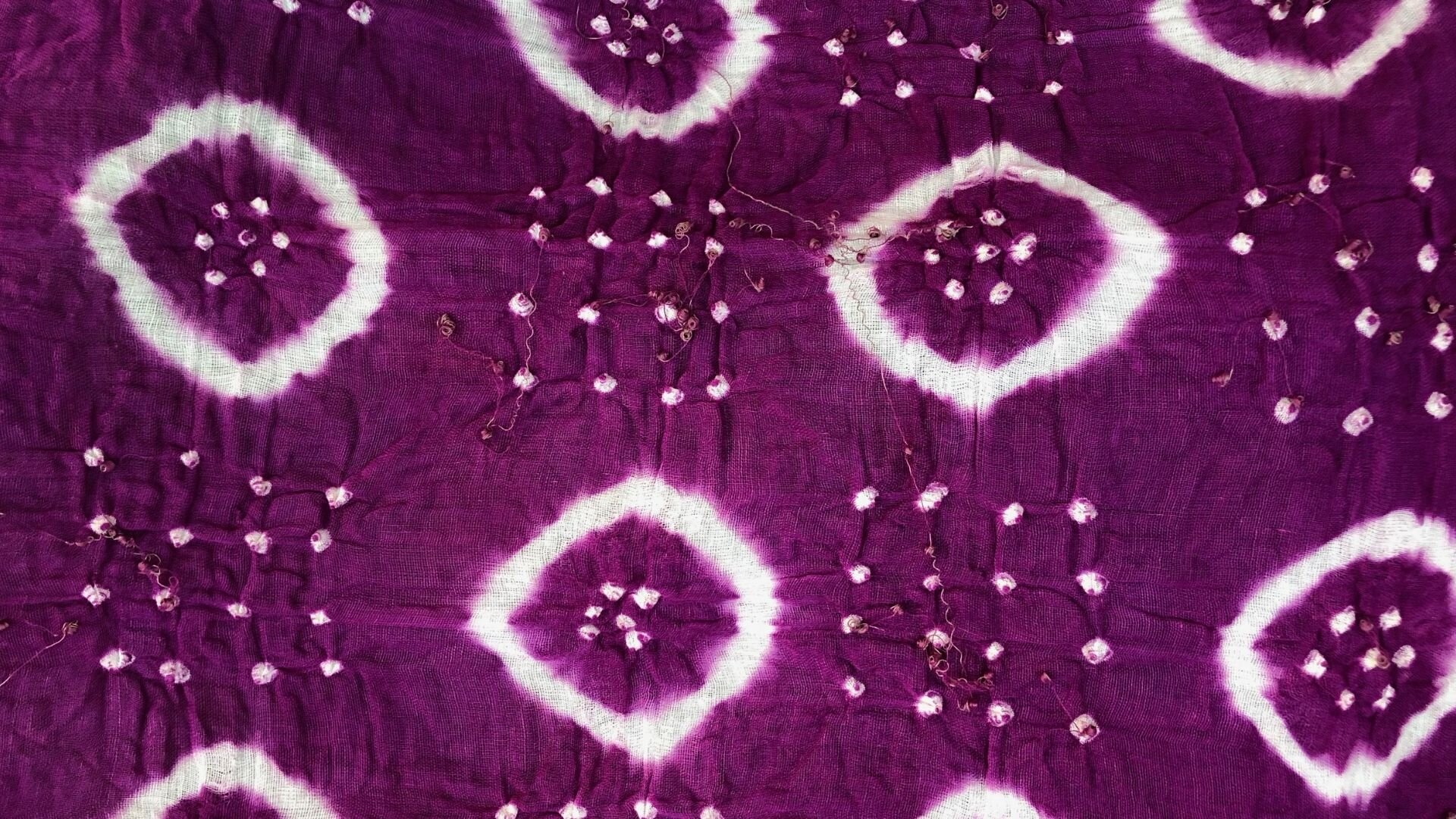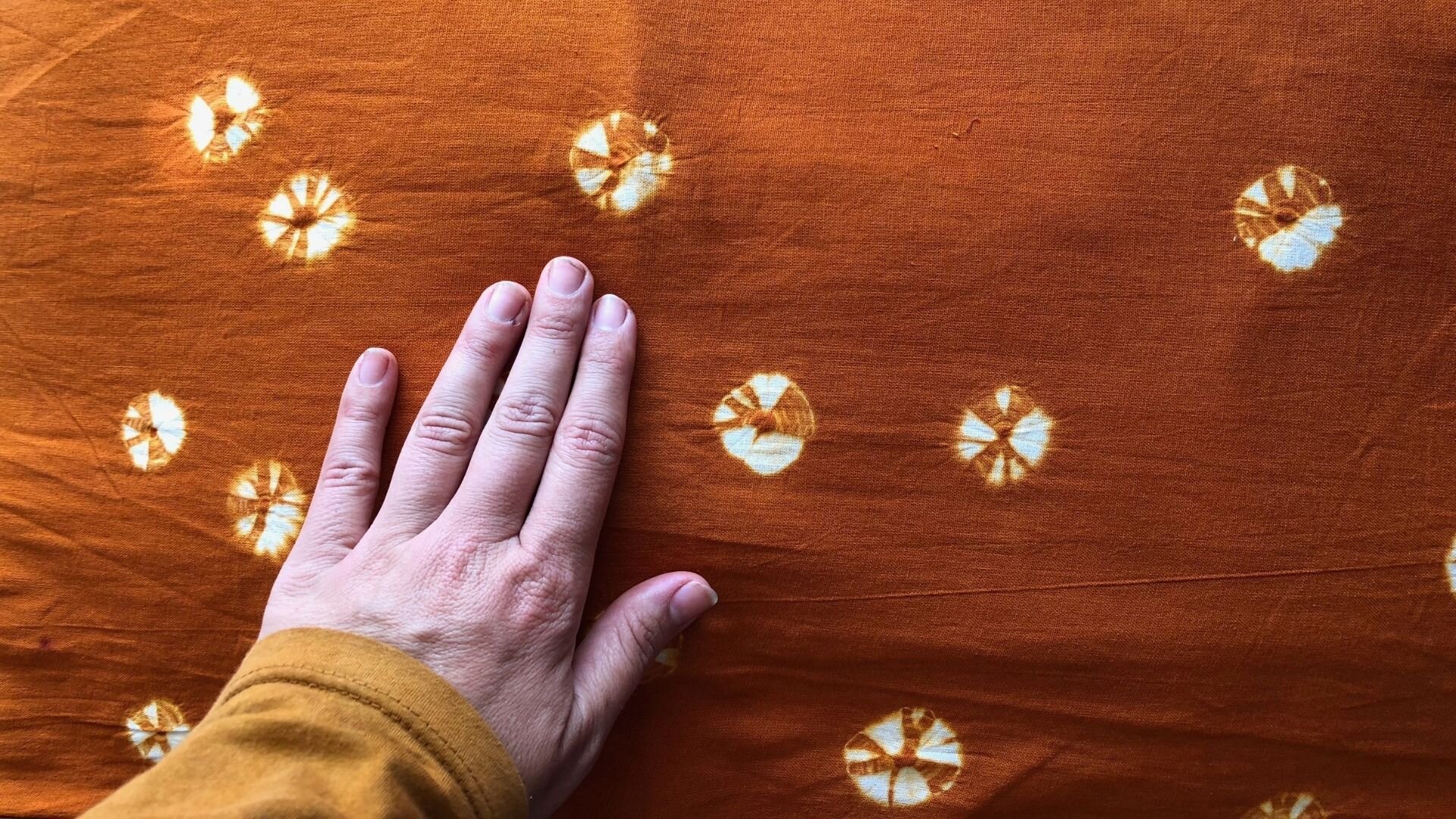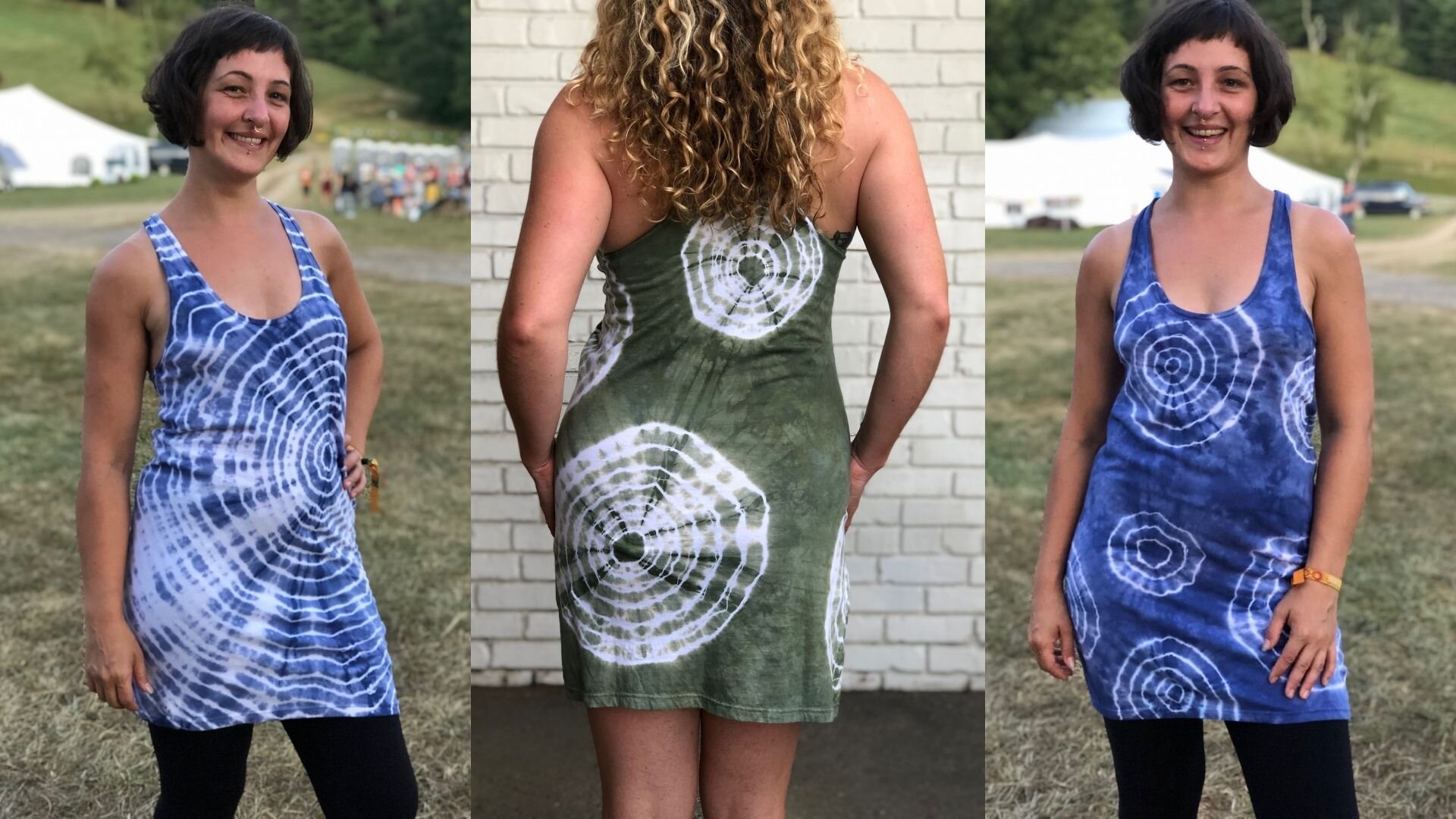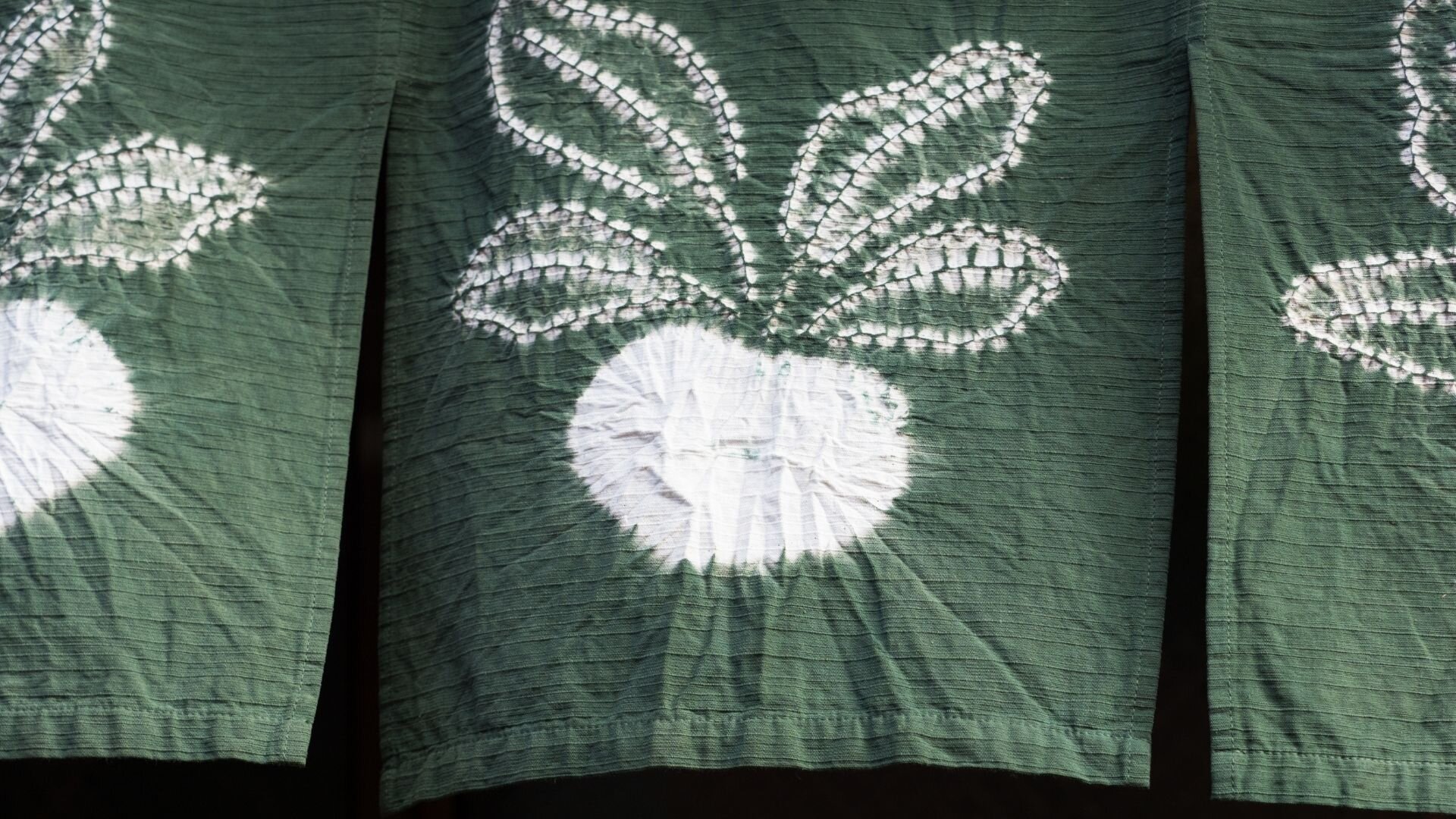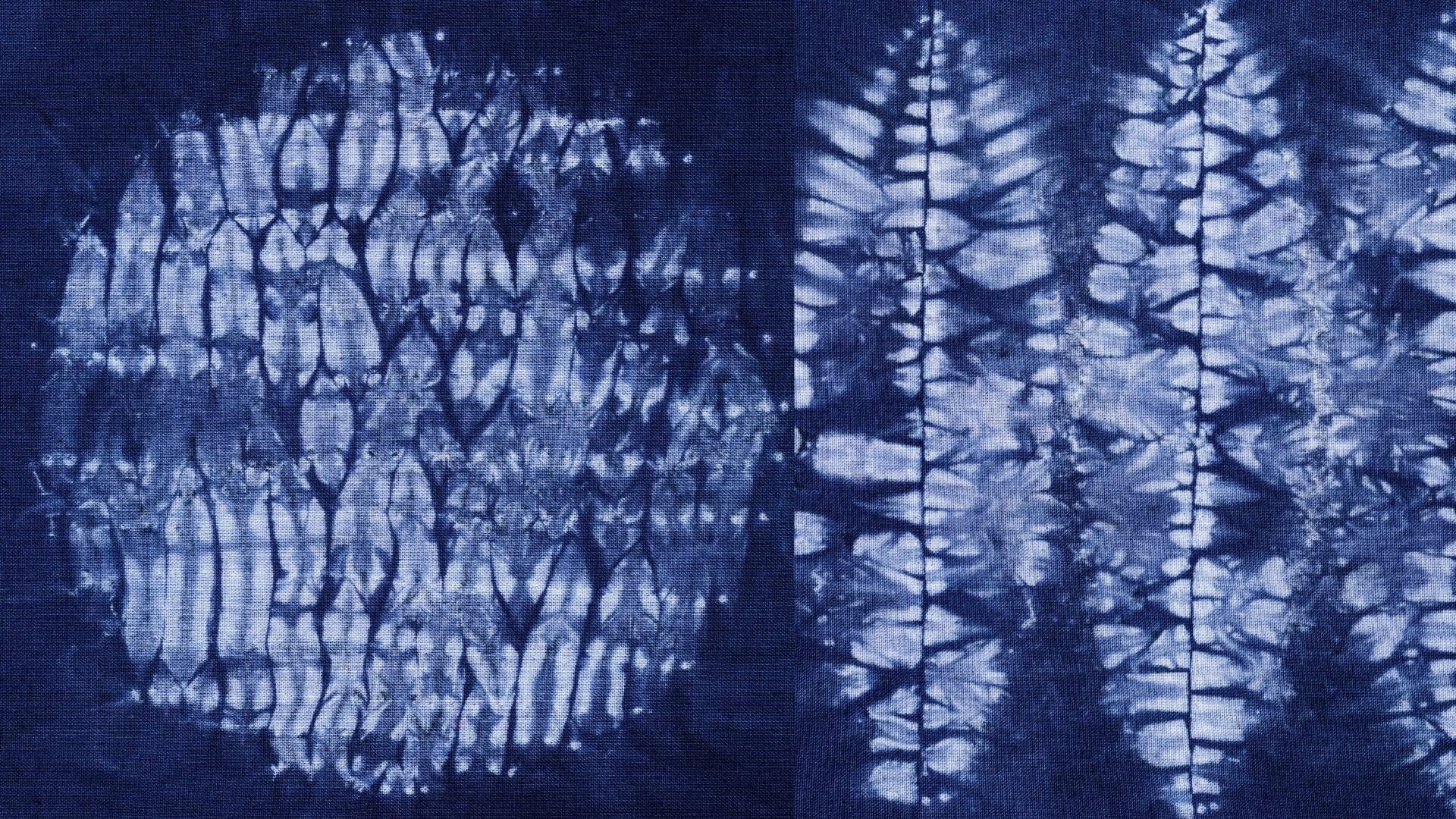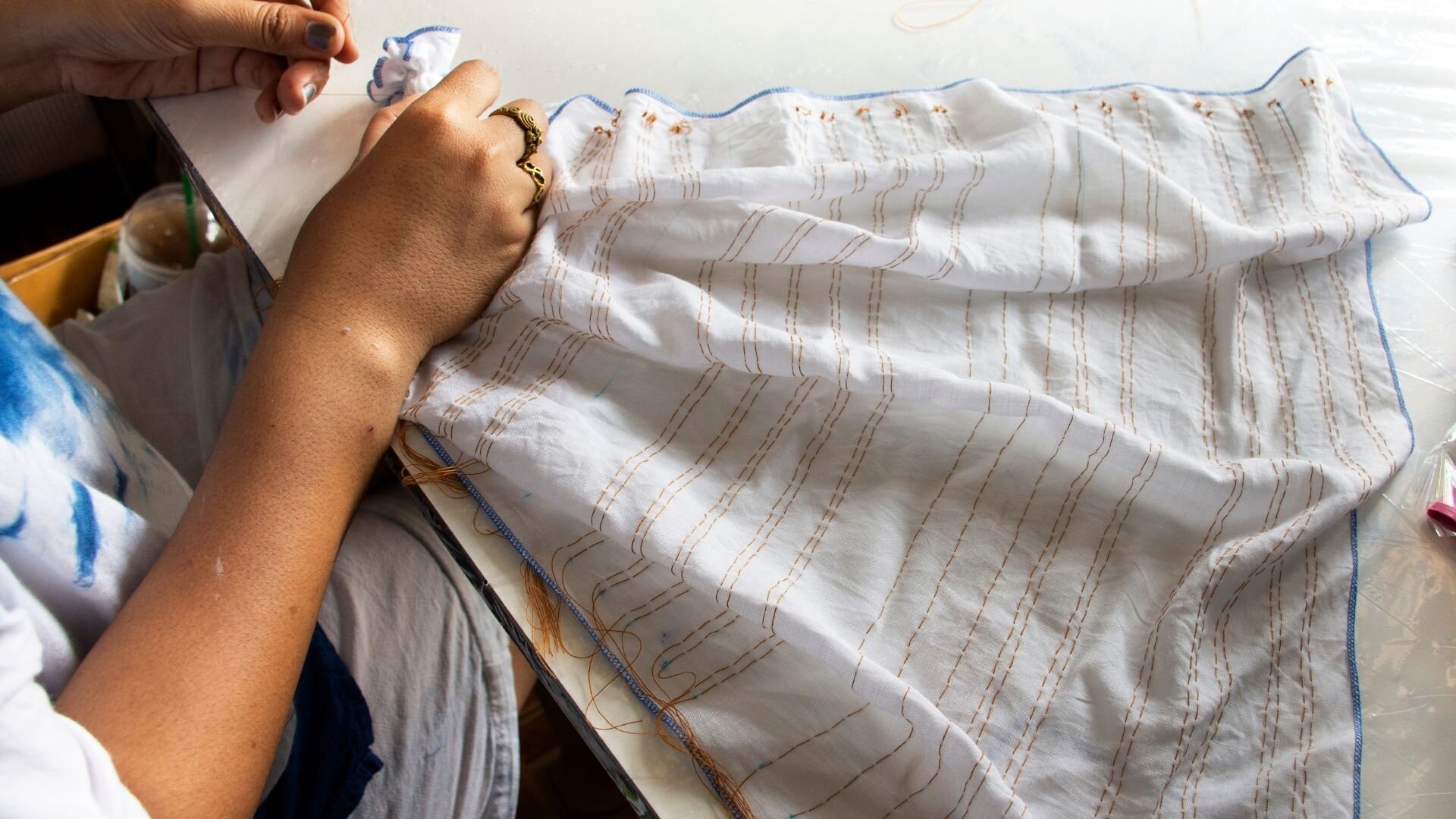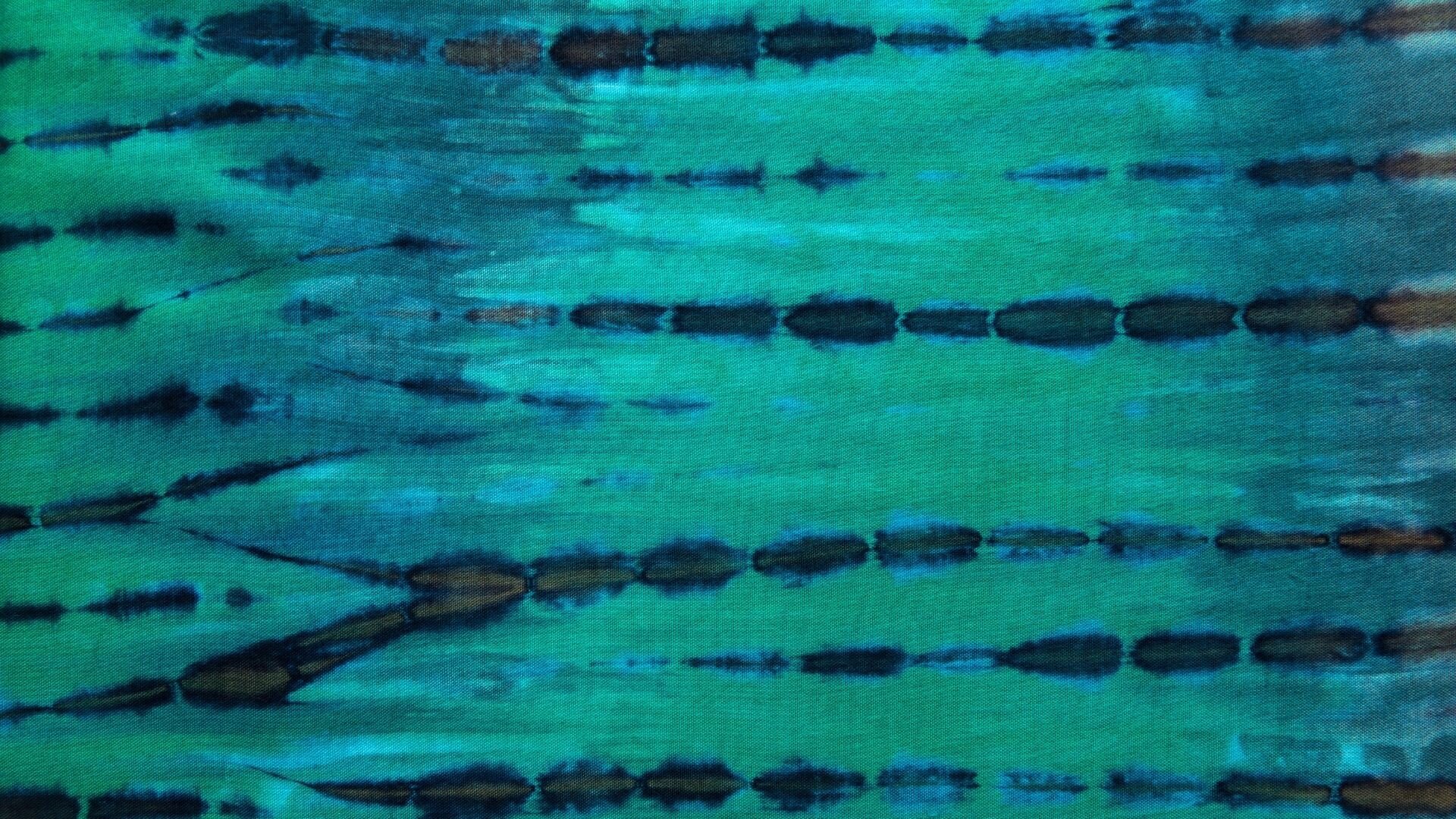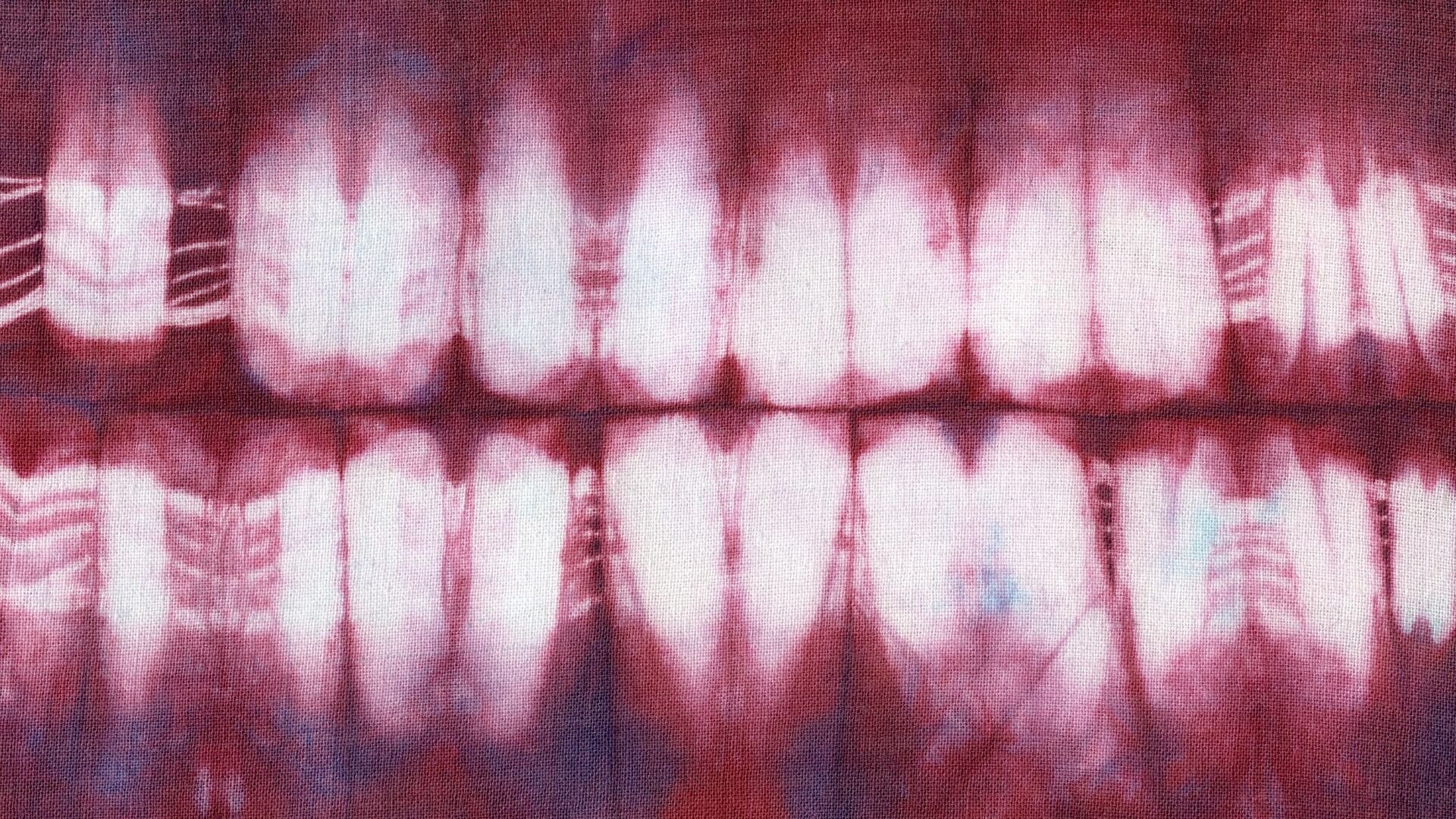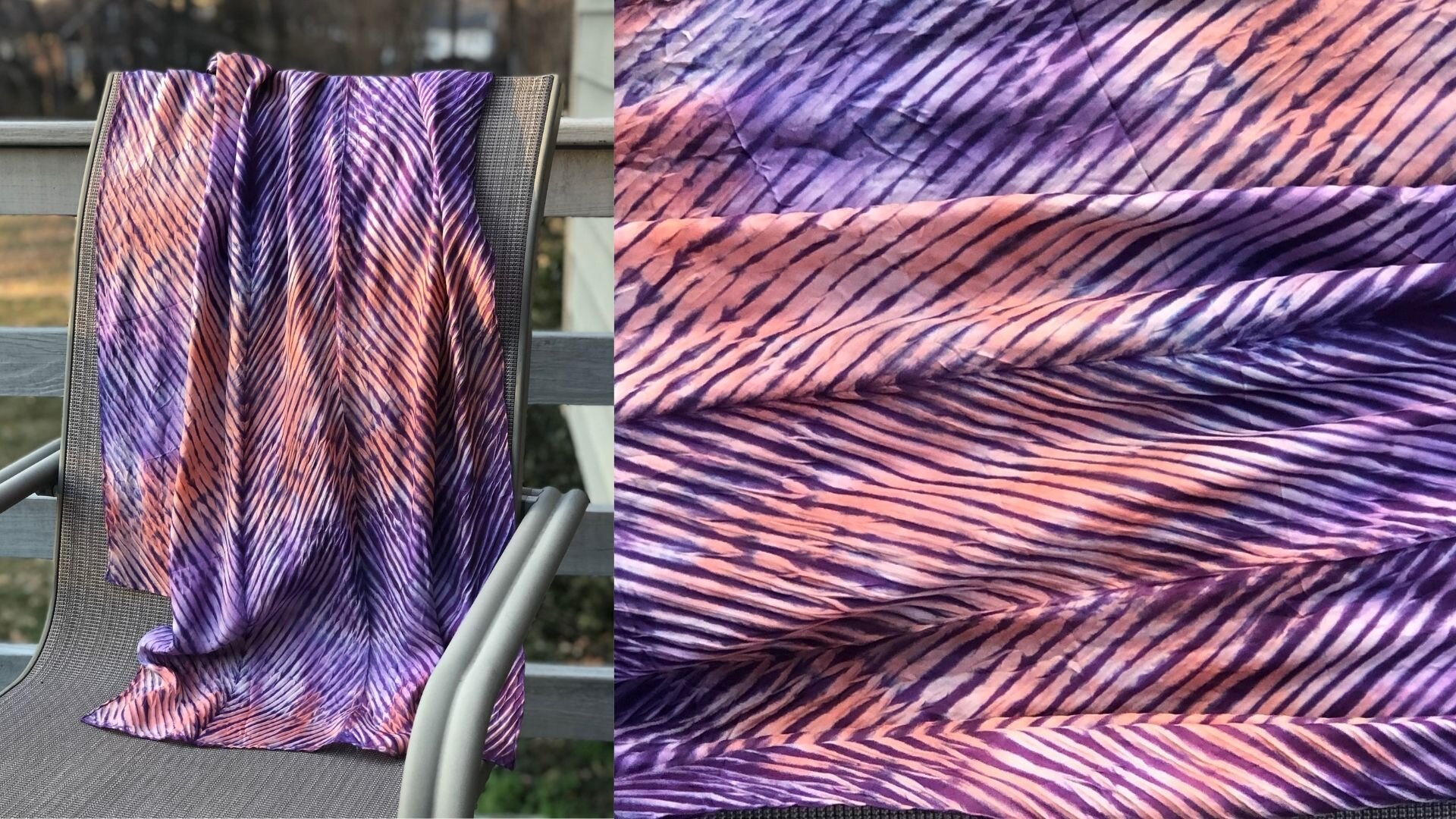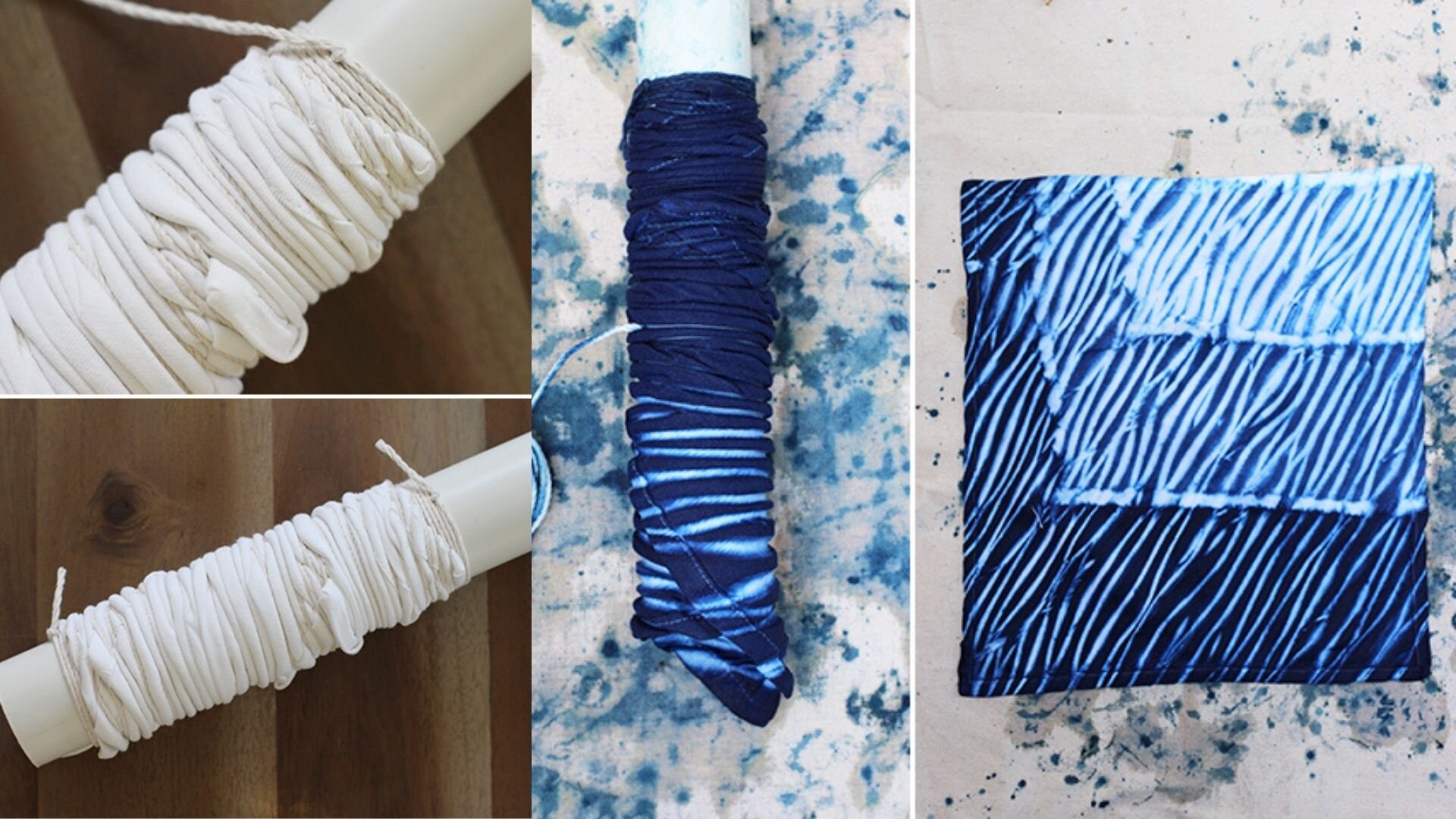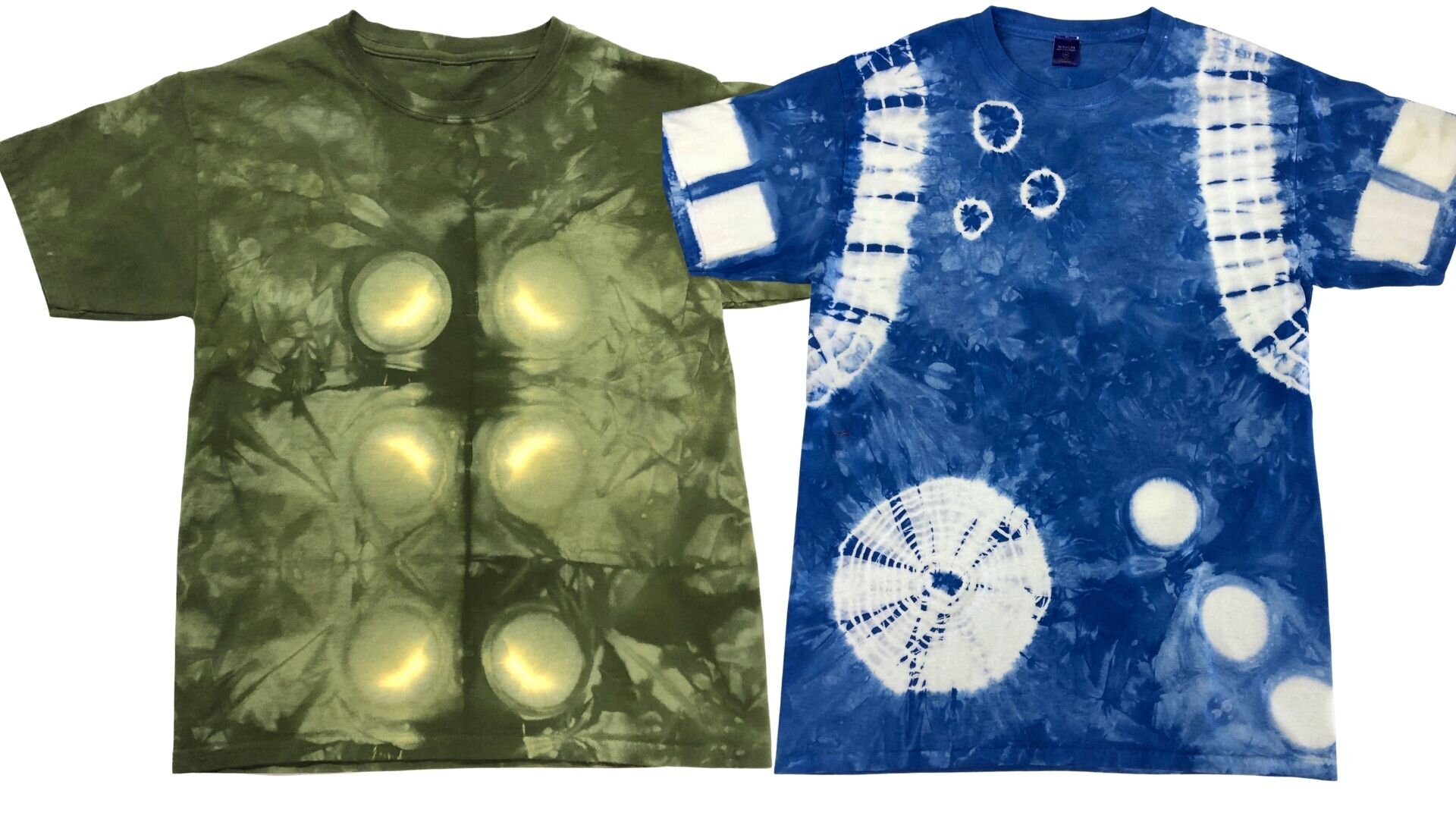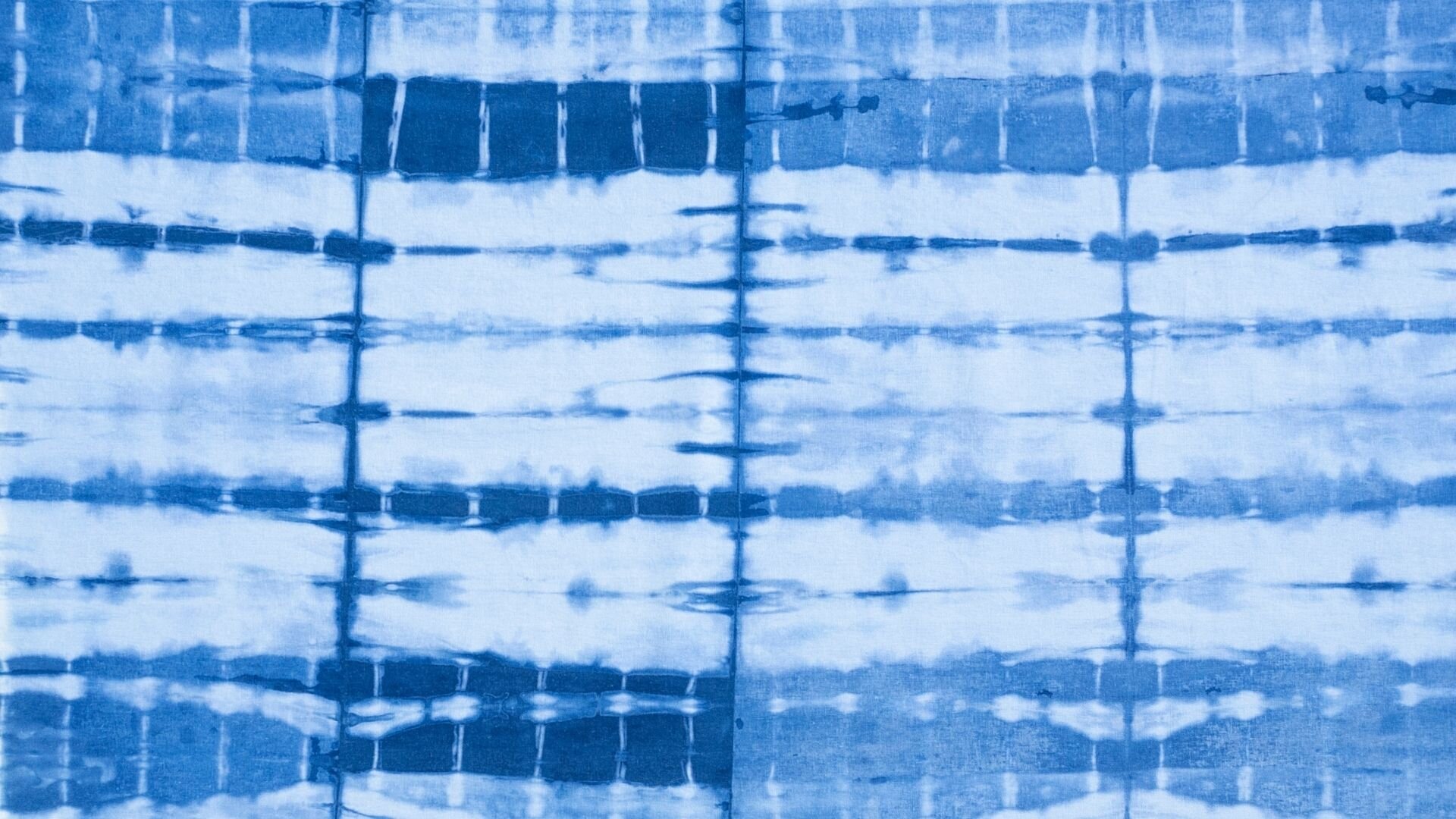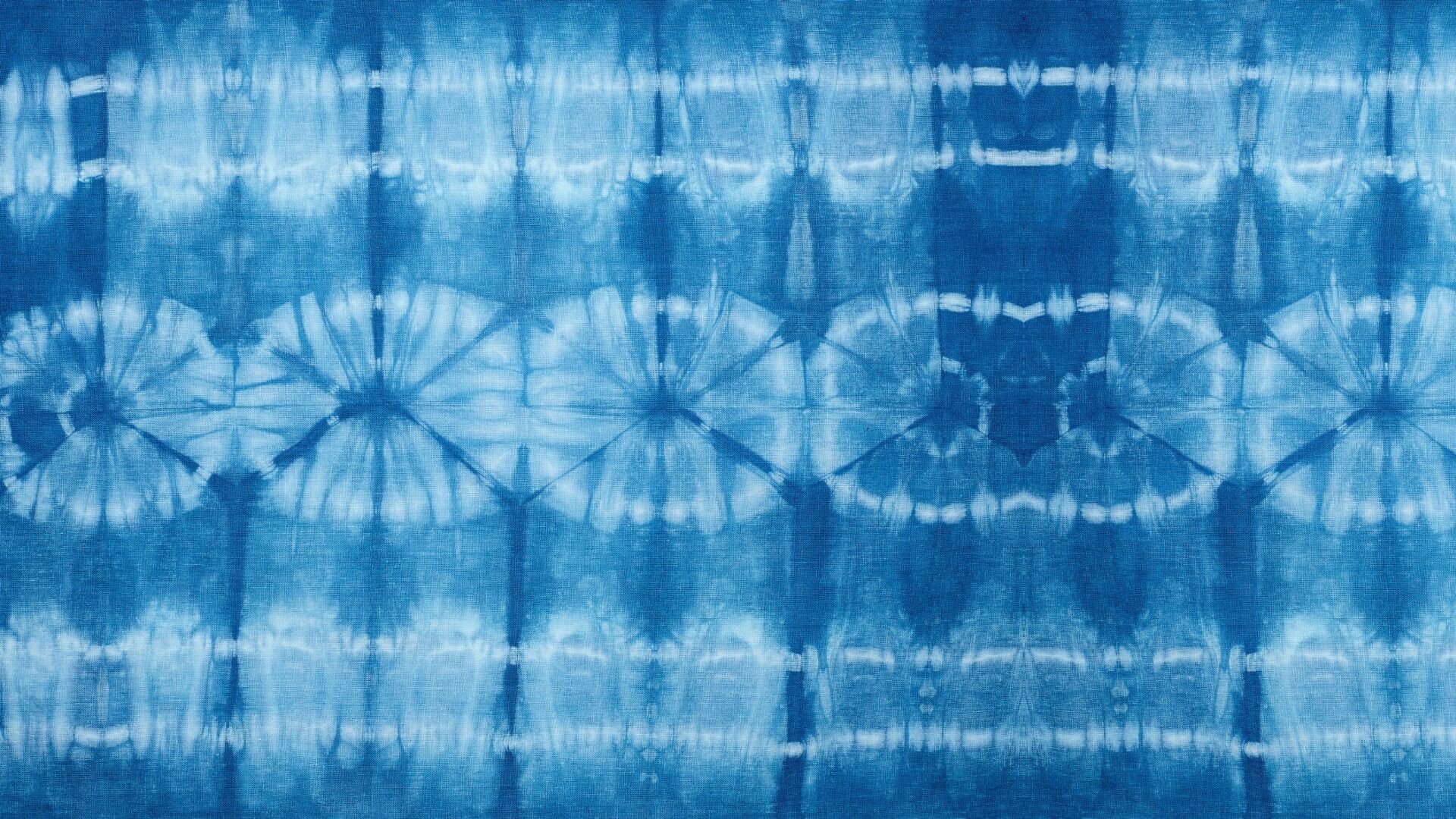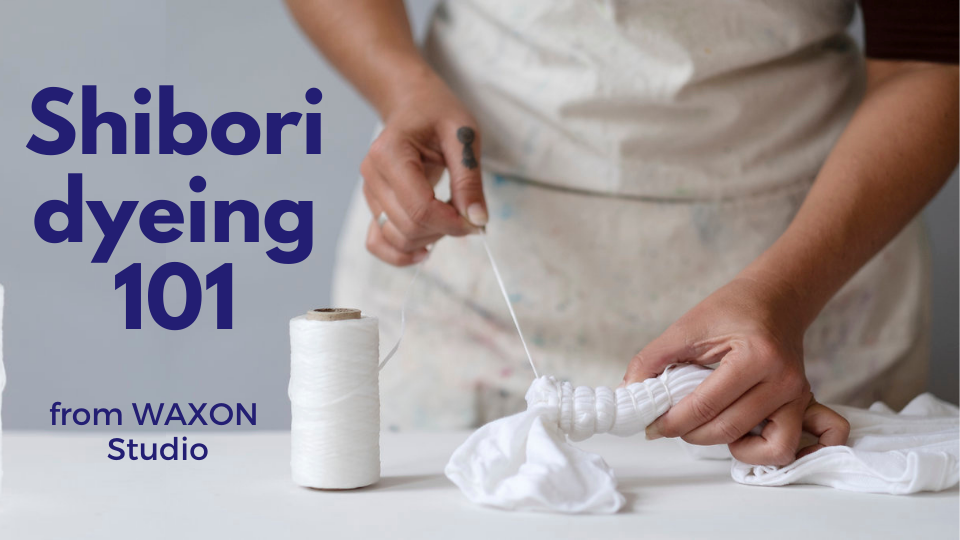What Is Shibori Dyeing?
What is Shibori? If you are looking for a general overview on Shibori dyeing and Shibori dyeing techniques, then you have come to the right place!
Shibori – traditional Japanese tie-dye – is simple, easy, very pleasing to the eye, and can be a lot more varied than you think. With Shibori dyeing you clamp, bind, fold, or wrap fabric to achieve endless pattern variations.
Shibori is great for creating custom hand-dyed fabrics and pre-sewn garments. Read on to discover the main Shibori patterns, the differences between Shibori and tie-dyeing, how to do Shibori at home with any color you want, and the history of Japanese Shibori dyeing.
What Is Shibori?
Preparing a cotton shirt to be Shibori dyed at WAXON Studio. Photo by Nicole McConville.
Shibori comes from the Japanese root word Shiboru, meaning to wring, squeeze, or bind. For the purposes of the home dyer and dye professional, we’re talking about using string, sinew, thread, solid shaped objects, and other household tools to bind up cloth.
This is not to be confused with Shibari — see the difference in the middle vowel there? — which is a totally different kind of tying things up. Google it, you’ll see what I mean.
What Is Shibori Dyeing?
In Shibori dyeing, the patterning all comes from the way that you bind, fold, twist, or clamp the fabric before immersing it into a dye bath. The simplest way to think about it, is that whatever you do to the fabric, you’re creating a resist that stops the dye from just flowing evenly all throughout the fabric.
You might make a resist in batik by painting hot wax onto part of the fabric. But, in Shibori, we create a resist by folding or tying the fabric up tightly so that the dye creates patterns in the cloth.
Sort of like folding a piece of paper before cutting it for paper dolls, or like the waves you might see in your hair after it’s been braided for a few days. Whatever we do to the cloth is going to make patterns and effects that repeat across the whole piece.
What Color Is Shibori?
When we think of Shibori, we think blue. Indigo is a plant that was used for thousands of years in Japan to dye cloth, and not just in solids.
Shibori patterns are tied, bound, clamped, or twisted, then immersed into the indigo dye. While Shibori was traditionally done in an indigo vat (and still is, across the world), we can open up a whole new catalog of color possibilities by using low-impact fiber reactive dyes instead of only the indigo plant.
Imagine all those beautiful Shibori patterns but in a delicious rust red color… or a deep plum… or a springy avocado green! I adore “borrowing” from Shibori to make inspired clothing that reminds me of everything I love about traditional textiles, but in other colors of the rainbow.
Indigo vats, fermenting.
Indigo is the traditional dye plant for Japanese Shibori dyeing.
What Is Shibori Tie Dye?
Honestly, the words mean the same thing. Shibori is Japanese for tie-dye!
The two terms can be used interchangeably. You can use Shibori tying methods and then use tie dye bottles to squirt colors on, or just use one color, even if it’s not indigo blue.
Many artists borrow from lots of different textile dyeing traditions.
What Is The Difference Between Shibori and Tie Dye?
We picture very different things when we picture “tie dye” and “Shibori". Classic American tie-dye uses lots of very bright colors all on the same piece, and is usually in rainbow hues, with lots of spirals, and (usually) not much white space.
Although trends do change — look at the very pastel, barely dyed, tie dye that’s in fashion right now in the spring of 2021. When we picture Shibori, we almost always think of indigo blue and white, with simple repeating geometric shapes defining the patterned areas.
This blog post will show you that these two dye methods are almost identical siblings, just raised in very different households.
Multicolor silk Shibori scarves drying in the sun.
Children and adults alike can enjoy using colorful dyes for Shibori projects!
The Six Main Types of Shibori
There are widely thought of to be six major Shibori techniques. Of course, not all textile artists agree, and there’s a lot of combinations you see out there that are difficult to pin down as being exactly one technique or the other.
Don’t get too caught up in the nomenclature unless you’re writing a scholarly article! Just experiment with what looks good to your eyes and what kinds of techniques your hands want to try.
Personally, stitching Nui Shibori makes me feel restless and anxious, even though I love sewing. As a dye artist I almost always want to do Itajime Shibori, where you fold your cloth and then clamp things onto it.
There’s no wrong way to discover your own favorites!
1. Kanoko Shibori
Kanoko is a Japanese word meaning “cloth dyed in a dappled pattern” or “pattern of dappled white spots,” like the spots on a fawn. Kanoko Shibori is amazing to me because you see it in textile traditions from other parts of the globe— maybe because it’s so simple and natural to the human hand!
In Kanoko Shibori you take little pinches of fabric and wrap string (or rubber bands) tightly around the base of each little “ponytail.” In tie-dye class we call this the jellyfish and we do it with rubber bands.
I was amazed to also see it everywhere in western India; over there it’s called Bandhani. The tighter you tie, the more of a resist it creates.
You can create big circles or teeny little circles. You can cover the whole cloth or you can just put them in certain areas. I love that humans have invented this same technique and design in very different parts of the world.
2. Kumo Shibori
Kumo means “spider” or “cloud”! Imagine your tiny Kanoko pinched circles… but this time make them taller and longer, and tie up the whole length of each one, as if you were wrapping your entire ponytail up with string from the base to the tip.
If you tie tightly, there will be a lot of white space, because even more fabric is trapped inside your pinched up fabric. After being dyed, the result inside each tightly bound point looks like a beautiful spiderweb!
3. Nui Shibori
Nui means to sew, to stitch, a sewing needle, etc. Nui Shibori, or “stitched Shibori” is fun because you get to create the resist on your cloth in any shape that you can stitch up!
You take a row of stitches and pull the fabric, cinching it up tightly, before immersing it in your dye bath. The resist comes from where the fabric was pulled so tightly, the dye couldn’t penetrate the fibers in those sections.
Most dyers start with long wavy lines or patterns when first attempting Nui Shibori.
Hint: try tracing out patterns with a washable marker before you start stitching! That will help guide you as your fabric gets pleated up, which can be confusing.
4. Miura Shibori
Similar to Nui, Miura Shibori is also known as looped binding. The artist uses a hooked needle, and plucks sections of the fabric.
The released pattern resembles water ripples. The pattern achieved depends on how tightly the fabric is bound and where it is bound, so there’s a lot of variation possible in this (and every other) Shibori technique.
I have a piece of cloth from West Africa that looks like it was tied and dyed in this way!
5. Arashi Shibori
Arashi Shibori was my first ever Shibori technique that I ever learned. At the summer camp where I taught tie dye, candle making, and batik, we also had a staff member who was a self-taught expert on simple Shibori projects for kids.
We had the maintenance staff cut us lots of pieces of PVC pipe from the hardware store, and the campers got to wrap long silk scarves around and around the pipes before we tied them up tightly, scrunching them down as much as we could.
This is Arashi, or pole-wrapping, Shibori! You can make your Arashi designs as quick & simple or as delicate and detailed as you want. Lots of Arashi Shibori artists like to leave the textured pleats in their finished projects, never ever ironing them flat.
6. Itajime Shibori
Itajime Shibori is currently my favorite to do. It’s fast, easy to teach, and gets you really bold, clear designs each time.
It’s a great bang for your buck, especially if you like lots of white space in your design! In Japanese, Itajime literally translates to “method of making patterns via pressing cloth between carved boards.”
First you fold your cloth, usually like an accordion or fan fold, and then you tie or clamp resists onto both sides. It can be as simple as two big popsicle sticks, or you can get fancy with clear acetate shapes that are purpose-built for resist dyeing.
Or, you can just grab whatever is handy. I’ve done Itajime with hardware store washers, with old AOL CDs (showing my age here), and random blocks of thin, strong plywood from my partner’s pile of discarded wood scraps.
What Fabrics & Materials Are Used for Shibori Dyeing?
As a long time devotee of fiber reactive dyes, I do all of my Shibori work on cellulose fibers (like cotton, or linen, or bamboo). That’s because my dyes work best on those types of fibers.
If you’re using a different type of dye, you’ll need to use the type of fabric that, that dye is formulated for. Here’s a bit more detail.
What Is the Best Fabric for Shibori?
Plenty of people do gorgeous Shibori work on silk, both amateurs (like the kids at my camp) and professionals alike. Check out the work of Michael Smith, another Asheville dye artist! For me, and at my studio, we do all of our Shibori work on plant fibers.
Cotton is natural, strong, can take a beating, won’t rip easily when you’re cutting off all those strings, and can be overdyed again and again if you don’t like your results the first time! You can practice all your Shibori techniques on pillow cases, t-shirts, old undies, cotton leggings, etc.
Upcycle things you already have in your closet, or hit up the thrift store! Just make sure you understand what dyes you’re going to use and if they work on the type of fabric you’re choosing. If you use fiber reactive dyes, any plant (cellulose) fiber will take the dyes great.
One of the biggest benefits of using fabrics made from plant fibers is that they are machine washable and can be dried in a dryer. I like to make sure when I’m dyeing something with or for a customer, they are not going to have to commit to hand washing or dry cleaning (yuck, chemicals!) for the lifespan of that piece of cloth.
Where Does Shibori Technique Come From?
All over the world, ancient peoples have developed surprisingly similar methods for dyeing fabric. There are countless ways in which fabric can be manipulated by human hands - it can be bound, folded, twisted or compressed; stitched, clamped or knotted.
Resists can be used by painting on wax, or paste, or mud, or by stamping it on, or dipping it. Each and every method results in different patterns, determined by how the fabric absorbs and/or resists dye.
The dye materials locally grown and used, the intensity of the dye bath, the availability and quality of water, and the fabric composition and thickness all have huge impacts on the end result. But, part of the mystery and magic of hand dyed fabric is that the makers can never be 100% sure of the final look. An element of surprise is always present.
One of Japan’s hand dyeing traditions is Shibori, but similar elements can be found here and there across the globe and throughout time.
How Old is Shibori?
Shibori as practiced in Japan is at least 1,300 years old. Shibori dyed cloth was among the goods donated by the Emperor Shomu to the Toudai-ji Buddhist temple in Nara, Japan in the 8th century… that’s the 700s!
So by that point, it was already popular enough that the Japanese Emperor considered it donation-worthy. Later on, during the peaceful Tokugawa Era from the 17th to 19th century (when trade, arts and culture flourished), Shibori took on an even wider appeal.
Many different regional techniques emerged, and Shibori became popular for not only the hemp dyeing by the lower classes, but also for decorating silk for the aristocracy, who would commission artisans to create stunning kimonos.
What Is the History of Shibori?
The Shibori we’re talking about here comes from Japan, but it is thought to have evolved following an original introduction from China. Supposedly having been introduced from China, along with the Chinese style of dress, Shibori was adapted in a unique way by the Japanese and is one of the oldest indigo dying techniques in Japan.
Shibori dyeing in indigo was especially popular amongst the lower class in feudal Japan. Unable to afford expensive fabrics like cotton and silk, cheap hemp clothing was widespread.
Can you imagine hemp being cheaper than cotton? That is certainly not the case in our industrial world!
Did we answer your question of “what is Shibori?” Shibori dyeing techniques are a very old Japanese tradition that create beautiful patterns on fabric.
Hopefully, you have gained a better understanding of Shibori dyeing techniques along with the different types of Shibori.
If you are interested, you can even DIY Shibori at home. My online course, “Shibori Dyeing 101: A Straightforward Guide to Creating Shibori with Fiber Reactive Dyes” is designed to help you explore a versatile, easy, modern take on Japanese Shibori dyeing.
You can even grab one of our Shibori kits to go along with the class. With fiber reactive dyes and just a few other simple tools that are easy to find, you can start experimenting with Shibori dyeing techniques right away.
A screenshot from my online Shibori course.
Shibori is easy, yes, but there are some definite "rules of the road" that you need to follow in order to get exactly the results you want. Not all tutorials are created equal, and there's a lot of conflicting information out there.
Take it from me— I've been a professional dye artist for almost half my life now! My goal is to get you ready, get you set, and help launch you into feeling confident and comfortable with every part of the Shibori process.
And of course, to get you incredible results — that’s the best part.
In my online Shibori course I give you all the insider info that I've collected over the years through formal & informal study, trial & error, establishing & growing a successful dye biz, and teaching hundreds and hundreds of kids, teens, and adults how to create their own Shibori dyed projects.

